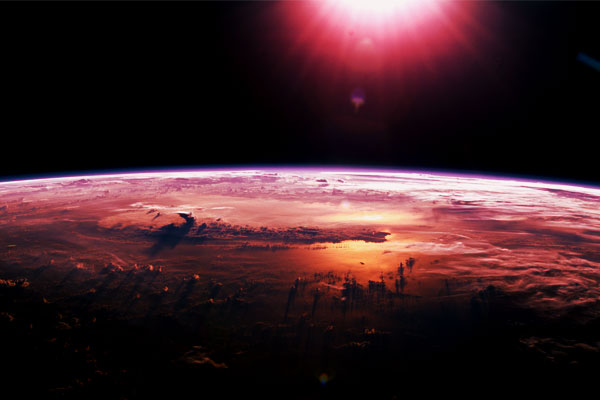What If the Sun Were Half as Big?

During the new DC Comics Universe series "Flashpoint," in which a time-traveling supervillain alters the past to warp the present, Life's Little Mysteries presents a 10-part series that examines what would happen if a major event in the history of the universe had gone just slightly different.
Part 8: What if ... the sun were half as massive?
The sun's temperature, color and diameter are determined by its mass. Bigger stars are hotter and bluer than the whitish-yellow sun, while smaller stars are cooler and redder.
Life would be: Nonexistent, at least as we know it.
Red dwarf stars are reckoned to have a tighter "habitable zone ," the band around a star within which liquid water can flow on a planet's surface. Earth is in our sun's habitable zone, for example; Venus is probably too close, although Mars is right on this band's outer edge.
In the half-mass sun scenario, the habitable zone would shift closer to the star; if the Earth orbited at the same distance, our water would freeze solid. Planets in a Mercury-size orbit, about two-thirds closer than Earth to this hypothetical crimson sun, would be sitting pretty instead.
Just how habitable a red dwarf's habitable zone might be is debatable. Smaller stars produce more frequent blasts of radiation called flares, which would bombard close-in planets. These worlds might also become tidally locked to the sun — as our moon is to Earth — and constantly present one hot hemisphere to the star, with the other permanently dark.
Sign up for the Live Science daily newsletter now
Get the world’s most fascinating discoveries delivered straight to your inbox.
But if life did find a way, plants, for example, would probably look black to our eyes, soaking up as much light as possible from their dim red star to power photosynthesis, Neil Comins, a professor of physics at the University of Maine, told Life's Little Mysteries. Most Earthly plants reflect, and thereby forego, a significant portion of green light.
Previously: What would life be like if Earth were twice as big ?
Next: What would life be like if our solar system formed elsewhere in the universe?
- Why Do Stars Twinkle?
- Did the Universe Begin as a Simple 1-D Line?
- Star Gliese 581's Habitable Zone Explained
Head to Newsarama.com for complete Flashpoint coverage.











